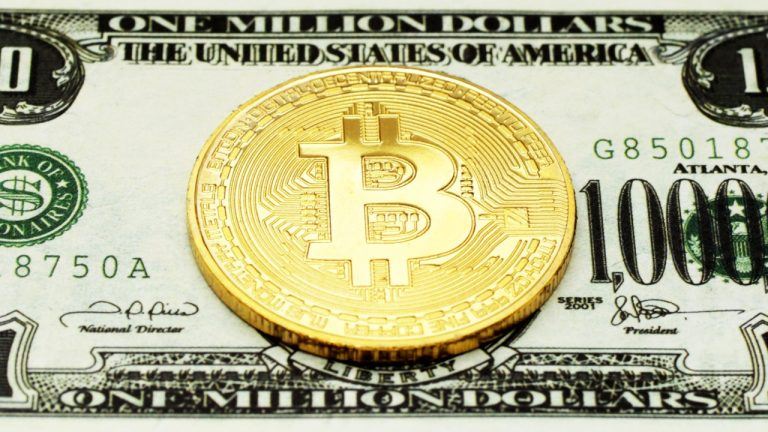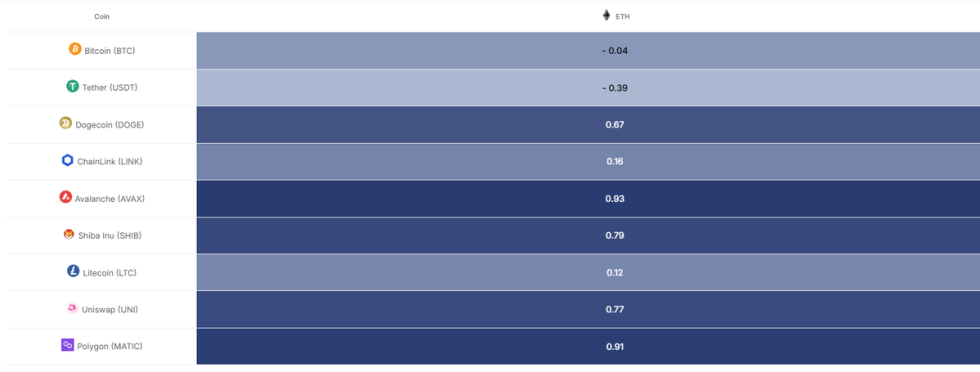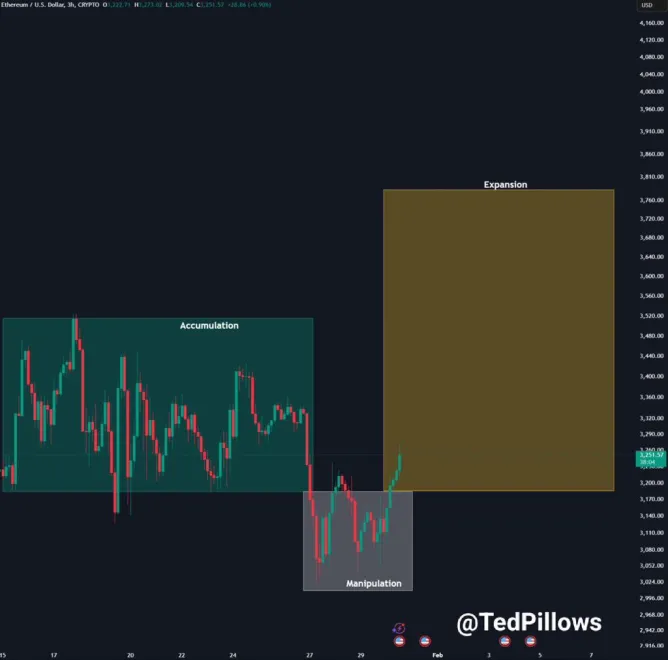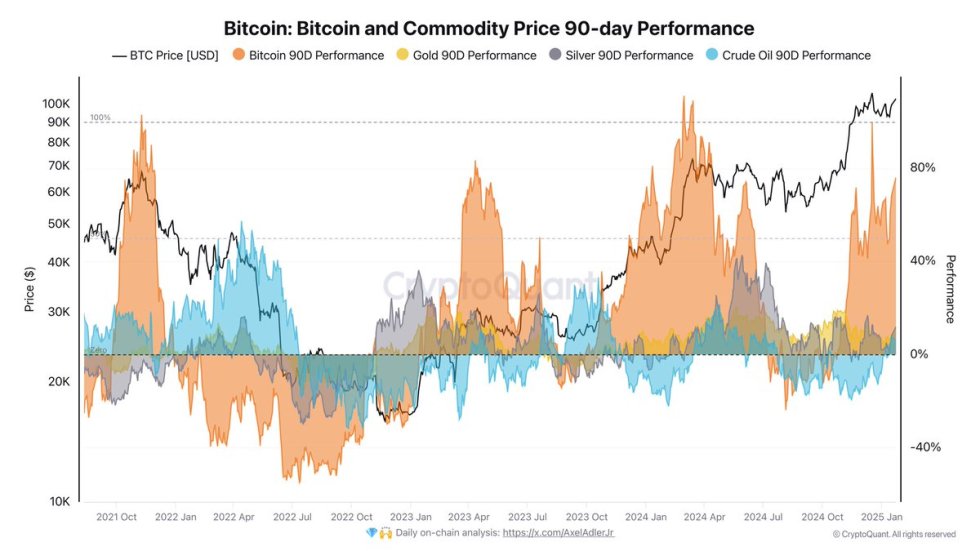
Many in and beyond the crypto industry believe that the political standoff around the debt ceiling increase makes digital assets more attractive in the long run.
The United States federal government’s default on its debt has been averted — at least for now. On Oct. 7, the Senate voted to increase the debt limit by $480 billion, a sum needed for the world’s biggest borrower to keep paying off its obligations until early December.
The deal secured a temporary resolution for a weeks-long partisan standoff that had investors both within and far beyond the U.S. unsettled. The once unimaginable prospect of a U.S. default seemed more conceivable than ever before.
As the system-wide uncertainty peaked ahead of the vote, the cryptocurrency market has been doing just fine, led by Bitcoin’s (BTC) biggest bull run in months. This has spurred customary narratives of crypto’s decoupling from more traditional asset classes and of Bitcoin as a safe haven in times of looming financial disasters.
So, what are the possible effects of the debt limit crisis on the role of digital assets in the global financial system?
Increasing own credit card limit
The U.S. government, thanks to controlling the printing press for the world’s reserve currency, has a unique power to set its own debt limit. Congress first imposed a cap on the aggregate national debt in 1939, increasing this limit on more than 100 occasions since then.
While the debt ceiling increase is normally not a partisan issue, things were different this time around. Embittered by Democrats’ ambitious social and climate spending agenda, Senate Republicans took a principled stand, refusing to back their opponents’ attempts to address the impending deadline for either raising the debt limit or defaulting on federal debt.
The lack of Republican support for increasing the debt limit, which requires 60 votes to pass the Senate rather than the simple majority that Democrats already wield, could be considered a symbolic move. Raising the amount of money that the Treasury can borrow does not authorize new spending in and of itself but rather is meant to allow it to cover existing obligations.
Partisan politics aside, some critics believe that the federal debt policy that relies on constantly increasing the borrowing cap is not great for the wallets of regular Americans. Chris Kline, co-founder and chief operating officer of cryptocurrency retirement investment provider Bitcoin IRA, noted to Cointelegraph:
“The government has given itself the ability to increase its credit card limit every year for the last hundred years on average and that has ramifications for the middle class. Middle class Americans are feeling the biggest pinch in their wallets from inflation and rising costs, all spawned from a monetary policy that is expanding the USD balance sheet.”
A risky haven
The temporary patch of a solution that the Senate has agreed on only staves off the debt ceiling issue until early December, effectively perpetuating the macroeconomic uncertainty. One prominent argument is that this uncertainty can play into Bitcoin’s hands in the coming weeks.
Arina Kulackovska, head of corporate payment solutions at cryptocurrency exchange CEX.IO, believes that “This uncertainty could potentially continue to be a driver of a BTC rally.”
At the same time, Kulackovska noted that cryptocurrencies are starting to “trade apart from the legacy markets,” which could lead to them being less malleable to macroeconomic dynamics that considerably affect more traditional asset classes.
Kay Khemani, managing director at online trading platform Spectre.ai, believes that the impact of the debt limit suspension on financial markets in general, including digital assets, is “likely to be favorable as it would mean more liquidity in the system (read: more debt),” which tends to flow to financial assets first.
Khemani further remarked: “Higher debt does erode the value of the dollar over time and this further strengthens the narrative — however misguided it may be — that crypto is a safe haven asset.”
Still, the degree to which cryptocurrencies have decoupled from other assets like stocks is still a matter of debate. Eric Bleeker, an analyst at investment advice company The Motley Fool, commented to Cointelegraph:
“As the kind of currency that relies on predetermined math instead of political brinkmanship, you’d figure Bitcoin would benefit from events like debt ceiling stand-offs. […] While most Bitcoin fans point to it being an asset with a limited supply that should gain in value while the U.S. prints more debt, the reality is that it’s been most closely correlated to the value of other risky assets in short-term sell-offs.”
One example that Bleeker invoked was Bitcoin briefly dropping more than 50% in March 2020 at the beginning of the pandemic. He also added that things may play out differently in the long run, as events like the debt ceiling crisis degrade trust in the dollar and make alternatives like Bitcoin more attractive.
Longer-term benefits
While industry participants and analysts differ on the short-term effects of the U.S. federal debt limit uncertainty on the cryptocurrency market, most of them sound remarkably consonant when discussing how it can influence the market in the long run. Two concurrent trends that are often mentioned are the erosion of trust in the dollar and institutions backing it and the rising demand for crypto.
Related: Crypto and pension funds: Like oil and water, or maybe not?
Haohan Xu, CEO of digital asset trading platform Apifiny, expects that raising the debt ceiling “will steadily apply more buy pressure on BTC, causing prices to steadily rise over time.” Marie Tatibouet, chief marketing officer of cryptocurrency exchange Gate.io, thinks that “Crypto’s quality as a market hedge will shine through.” Tatibouet added that the crypto market has already outgrown stocks and gold since the pandemic began, adding: “If there is indeed a financial crisis due to the government defaulting, then crypto will be a safe haven in the long term, as it has already proven to be.”
Daniel Gouldman, CEO and co-founder of financial services provider Unbanked, called the entire dance around the debt limit increase “absolutely ridiculous,” as it makes the United States’ credit score hostage of partisan politics:
“We welcome more people into crypto as our elected officials continue to play chicken with the full faith and credit of the U.S. dollar and U.S. government’s commitment to its own prior spending decisions.”
Ron Levy, CEO of blockchain education and training firm The Crypto Company, noted the contrast between the two financial systems that the debt ceiling crisis makes conspicuous. Levy commented to Cointelegraph that this might be the time when the crypto industry finally decouples from traditional finance:
“On the traditional side, we have inevitable continued money printing, growing inflation and economic uncertainty. On the crypto side, we have an industry that has grown and continues to grow exponentially.u201D
It is likely impossible to tell if the ultimate decoupling is attainable at all, let alone when it can be achieved. Yet, the debt ceiling crisis goes a long way toward highlighting the difference between how traditional and digital money is governed — and this comparison is not particularly favorable to fiat currencies.

You can get bonuses upto $100 FREE BONUS when you:
💰 Install these recommended apps:
💲 SocialGood - 100% Crypto Back on Everyday Shopping
💲 xPortal - The DeFi For The Next Billion
💲 CryptoTab Browser - Lightweight, fast, and ready to mine!
💰 Register on these recommended exchanges:
🟡 Binance🟡 Bitfinex🟡 Bitmart🟡 Bittrex🟡 Bitget
🟡 CoinEx🟡 Crypto.com🟡 Gate.io🟡 Huobi🟡 Kucoin.




















Comments